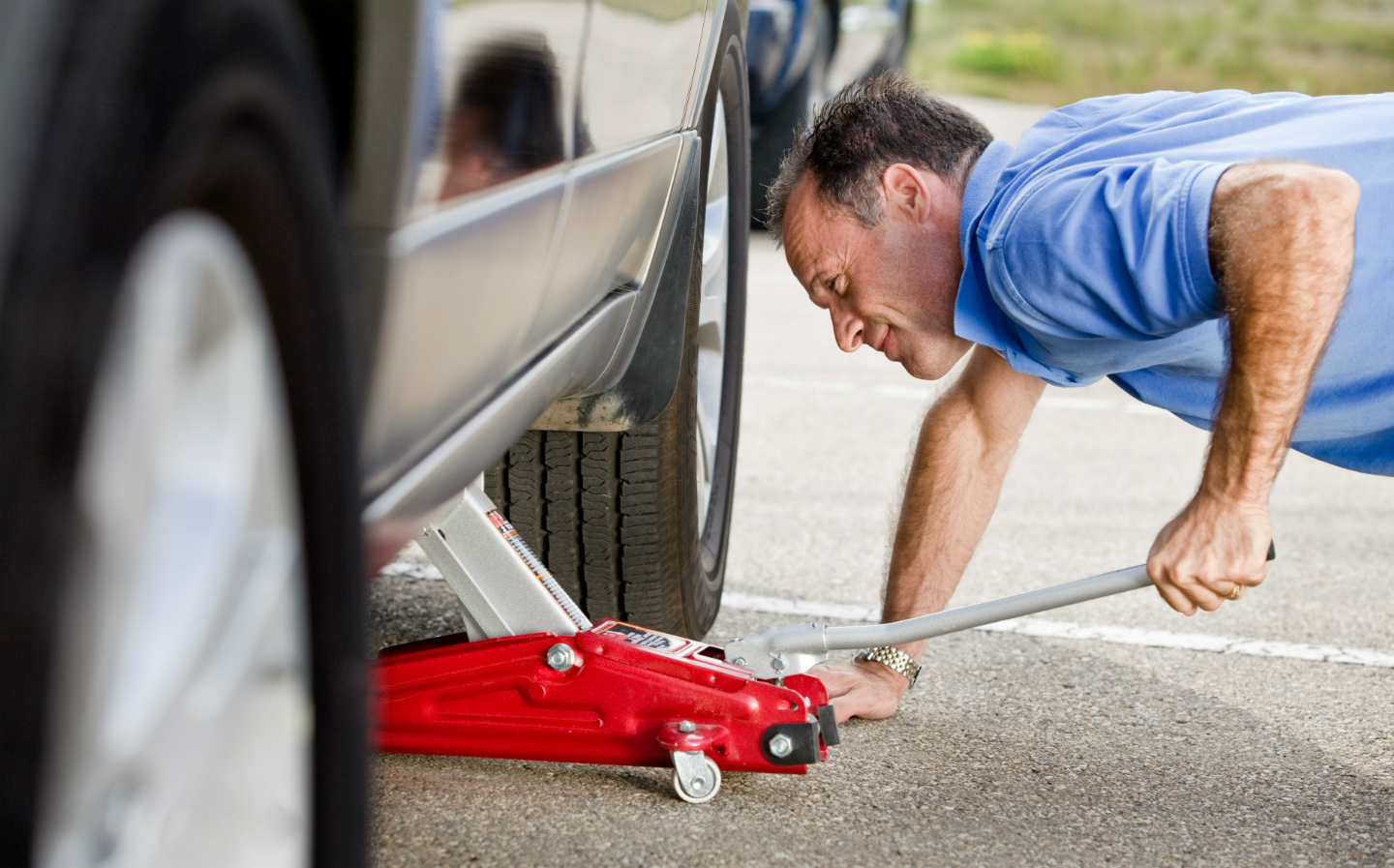Haynes How-To: jack up a car
Up, up and away
Sections
- How to safely jack up a car
- What you’ll need
- How much do trolley jacks and axle stands cost?
- Jacking up a car, step-by-step
How to safely jack up a car
Hundreds of thousands of Britain’s drivers like to carry out maintenance on their car. From changing spark plugs to draining engine oil, fitting new brake pads to replacing engine coolant, there are plenty of tasks that can be accomplished by drivers with little mechanical knowledge. It’s satisfying, gives you something to boast about to friends and can save a small fortune compared with having the work done at a garage.
To achieve many of these tasks, a car needs to be raised from the ground, giving space to work around the engine or other components. And that calls for a jack.
There are some simple but essential rules that anyone raising a car on a jack should follow. Failing to do so could mean that a harmless spot of DIY turns into an emergency visit to the local hospital, or worse. There is a serious risk of being crushed by the vehicle if the correct precautions aren’t followed.
Browse NEW or USED cars for sale
The most important rule is to not let children near the vehicle, or leave it unattended. And keep a phone to hand, in case of an emergency.
Only raise a vehicle using a jack when it is parked on a flat, stable surface. Ideally, that would be a garage floor or a paved driveway, and it must be out of harm’s way from moving traffic.
Before jacking the vehicle, always place chocks behind the wheels at the opposite end of the car to help prevent it from moving. Ensure the handbrake is applied, put the car in first gear or, if it has an automatic gearbox, put it in ‘Park’.
If you need to remove any of the wheels for your DIY task, slightly loosen the wheel nuts before raising the vehicle (you’ll unscrew them completely when the car is off the ground).
What you’ll need
As any mechanic will advise, the type of jack that is safest to use is known as a trolley jack. It is more robust and able to lift heavier loads than the simple scissor jack supplied with the vehicle. The latter is designed for emergency use at the roadside, when a car’s tyre suffers a puncture.
Next, anyone wanting to roll up their sleeves and get under their car will need to secure it using axle stands. The car should not be supported by the jack – only raised, so that the axle stands can be positioned under the car before it is lowered onto them. Again, these should be capable of supporting more than the car’s weight.
How much do trolley jacks and axle stands cost?
Trolley jacks cost from £25, but can be more than £100 for top-end models. You should check the weight of your vehicle, in the user manual (handbook) and buy a jack that is capable of lifting more than the car’s weight. Axle stands cost between £15 and £70, depending on the brand and weight they will support.
Jacking up a car: step-by-step
Read the vehicle handbook. If needed, refer to the full haynes.com/ondemand service – there may even be a video tutorial.
- Ensure the vehicle is on a flat, stable surface
- Apply the handbrake, put the car in first gear or ‘Park if it is an automatic gearbox
- Chock the wheels at the opposite end of the vehicle to the one you are jacking, to prevent movement of the car
- If you intend removing a wheel, always loosen the wheel nuts before you jack the car
- Always use a hydraulic trolley jack, never use your emergency jack supplied with the car
- Using the jacking locations as specified in your car’s handbook, carefully raise the car using the trolley jack. These designated points are robust enough to prevent any damage being caused to the car, whereas placing the jack beneath the engine’s oil sump, floor pan or suspension components could cause an expensive breakage
- Position the axle stands placed at the specified jacking points. The vehicle handbook will show the locations
- Carefully lower the vehicle onto the jacking stands
- Some people like to leave the jack in position as well, so it can work as a fail-safe should there be any problem with the axle stands. However, this will depend on whether or not it obstructs the area where you need to work
- Once you have finished the maintenance task, use the jack to raise the vehicle from the axle stands, remove the stands and then carefully lower the vehicle to the ground
- If you removed a wheel and replaced it, remember that the wheel nuts will need tightening





